Dudes & Knickers: NYC Word Origins
October 29, 2013
Yesterday walking down Fifth Avenue I heard in the tourist babble of the street what sounded (to my Californian ears) like an authentic pronunciation of the word “dude.” There’s a quality, a languid, bovine note, that I miss when other States use it. “Dude” seems to me born of the West, and from there exported over the amber grain to every corner of the nation.
Or not? As it happens: not. During research for Secret New York, I discovered that it’s the other way around: “dude” was coined on the streets of Gotham. Which got me thinking: other New York City word origins? I sniffed around, made a list as a thematic insert for the book, but it got cut for lack of space. I just dug it up: here it is.
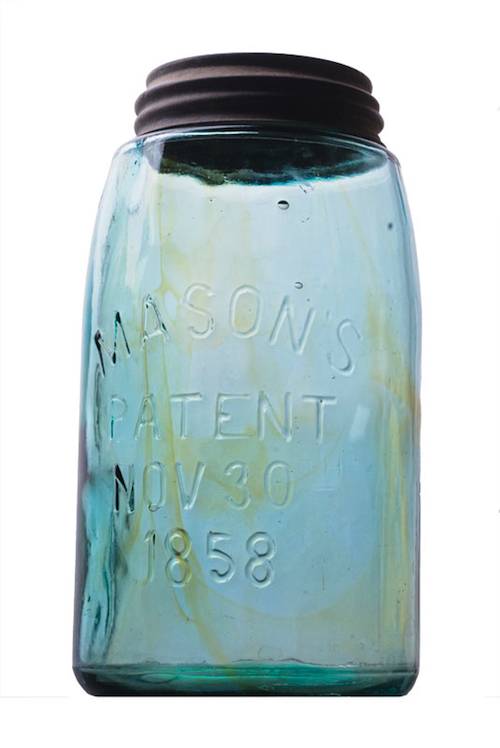
John L. Mason, a tinsmith working in New York, filed his patent for a screw-on lid in 1858. He was only 26.
head shop
Head shops are where you can buy a decorative statuette that is curiously ideal for smoking weed in. The term comes from a shop of the same name that operated out of 304 East 9th Street. After it opened in May, 1966, the Village Voice noted its collection of “exotica,” and added: “The police have been by a few times, taken notes, but everything is cool because no drugs of any kind are sold there.”
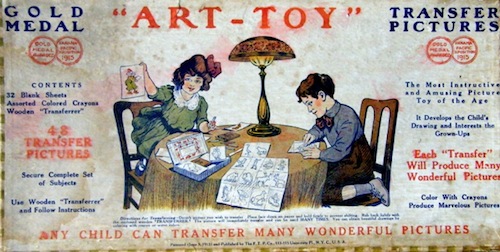
This odd word has been traced to New York City children’s slang in the 1920s. At the time decal transfers were popular; kids would stick them on everything for no good (or bad) reason, perhaps the logic behind the meaning “ridiculous, to no purpose.” The word “decal” is an abbreviation of “decalcomania,” from French décalcomanie. “Decalcomania” got twisted to “cockamamie.”
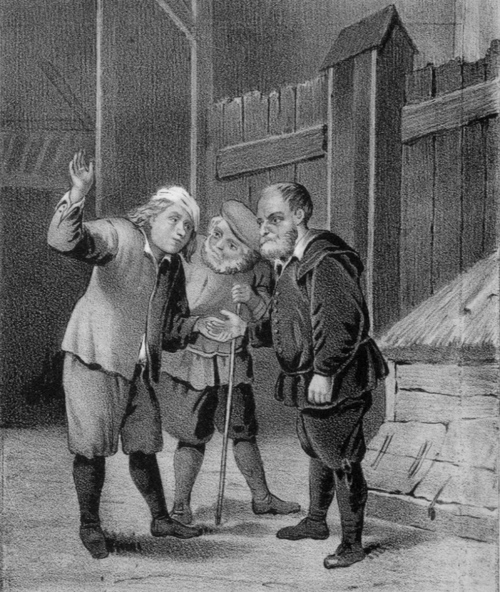
Short for “knickerbockers.” Washington Irving’s History of New York gave us this term for a New Yorker (it gets shortened even further in the case of the basketball team, the Knicks). Irving’s book was illustrated by George Cruikshank, who portrayed “old-time” Dutch in loose short pants. They looked a lot like women’s undergarments.
smart aleck
According to Webster’s Third New International Dictionary: “a self-satisfied self-assertive cocky person with pretensions to cleverness.” This presumably sums up the character of Aleck Hoag, who lent his name to the phenomenon. Hoag was a pimp, thief and con-man active in the mid-1800s; he operated a New York brothel equipped with sliding wall panels so he could rob the johns while they slept.
op-ed
From “opposite the editorial page,” a newspaper format first used by the New York World.
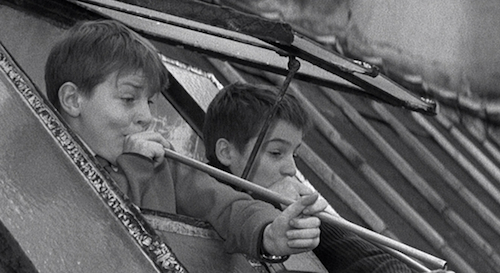
Straight from Dutch hoekje, meaning “hide and seek.” Used in the sense of skipping school from at least the 1840s.
rap
The musical form and the name for it are both homegrown.
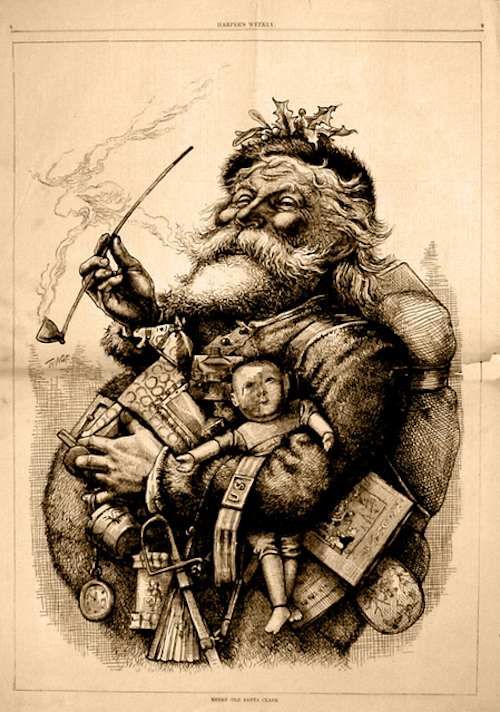
New York invented Santa Claus. In Holland, St. Nicholas’s Feast Day is on December 6, but early New Yorkers moved it, along with its tradition of giving gifts, to Christmas. The name first appeared (as St. A. Claus) in the New York Gazette, 1773. Washington Irving was the first American writer to give a description of Santa Claus (“riding jollily among the tree tops or over the roofs of the houses”) and Harper’s Weekly cartoonist Thomas Nast gave him the form we recognize today. But it was another New Yorker, Clement Clark Moore, who really fixed the man in the public imagination: in 1822 he wrote “A Visit from St. Nicholas,” which begins, “’Twas the night before Christmas...”
hooker
From Corlear’s Hook, a Lower East Side neighborhood on the river once known for sailors, shipwrights, and the prostitutes who lured them.
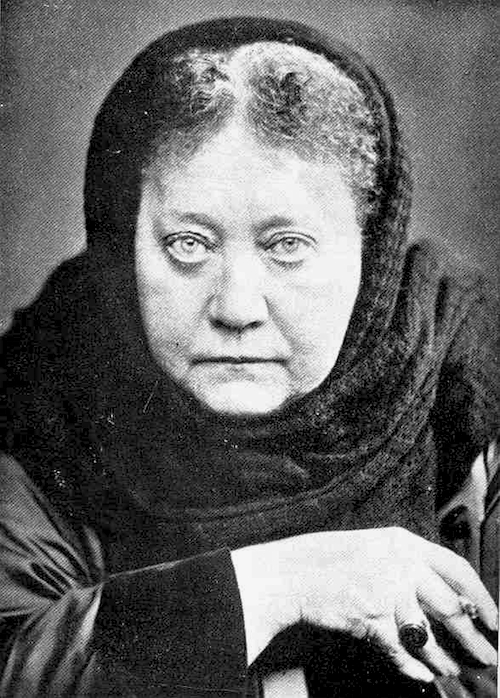
From Greek theosophos (“one wise about God”), the name of the combination of ancient and Eastern philosophies promoted from 1875 by the cracked and intense Russian aristocrat Helena Blavatsky at her mystical salon, called the Theosophical Society.
dude
First recorded as New York City slang in 1883, meaning “a fastidious man.”
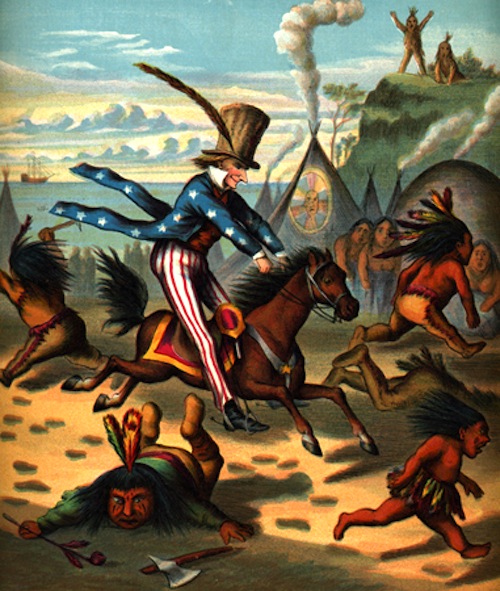
The term Southerners use to disparage Northerners has a rich history of insult. It was originally designed to hurt the feelings of the Dutch: the word either comes from Janke, meaning “little John” or Jan Kees—“John Cheese.” In a reversal, the early Dutch adopted “Yankee” to make fun of Englishmen in neighboring Connecticut. In turn the British used it, even before the Revolution, to describe Americans in general. The song “Yankee Doodle” dates from 1755, during the French and Indian War. It was written by a limey bastard Army surgeon to mock the ragtag Colonial troops who fought alongside the regulars.




